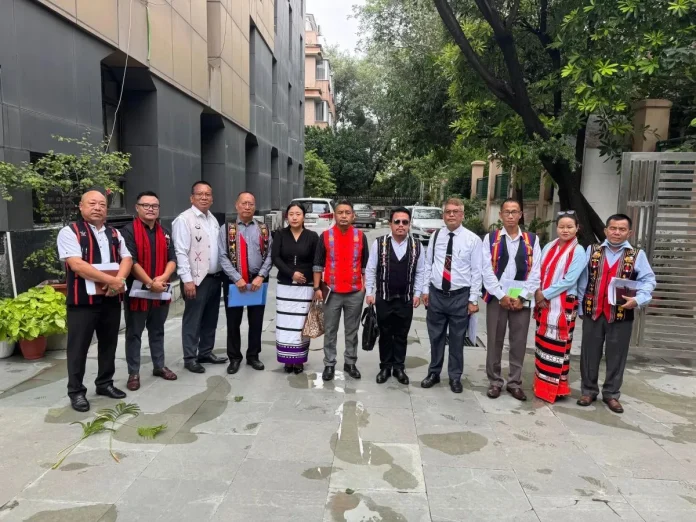New Delhi, August 26: In a significant development, the Naga civil society organisations met with officials of the Ministry of Home Affairs (MHA) in New Delhi on Tuesday to press for the reinstatement of the old Free Movement Regime (FMR) and an immediate halt to the ongoing border fencing along the India-Myanmar border.
The meeting was led on the government’s side by A.K. Mishra, Advisor to the MHA on Northeast Affairs. The 11-member Naga delegation was headed by United Naga Council (UNC) President Ng. Lorho and included representatives from the All Naga Students’ Association, Manipur (ANSAM), and the Naga Women’s Union (NWU).
According to a UNC spokesperson, the meeting ended without a conclusive resolution. “After returning to Imphal on Wednesday, we will deliberate on the discussions held with the MHA and decide our next steps,” the spokesperson stated.
The meeting comes shortly after the expiration of a 20-day ultimatum served by the UNC to both the central and Manipur state governments, demanding the restoration of the pre-existing FMR and cessation of border fencing along the 398-kilometre stretch of the Indo-Myanmar border that runs through Manipur.
The Naga bodies argue that the removal of the FMR and the construction of the border fencing threaten the social, cultural, and familial ties shared by Naga communities residing on both sides of the international border. They have described the central government’s actions as “unilateral” and “disrespectful to the historical realities of indigenous peoples living in the region.”
Earlier, on August 16, the UNC had met with Manipur Governor Ajay Kumar Bhalla in Imphal to voice similar concerns. That meeting, too, did not yield any significant breakthrough.
The FMR, which was suspended by the Centre last year, previously allowed people living within 16 km on either side of the India-Myanmar border to travel across without visa restrictions for limited durations. The decision to abrogate the FMR and construct physical barriers has sparked protests and ongoing agitation among Naga groups in the region.

